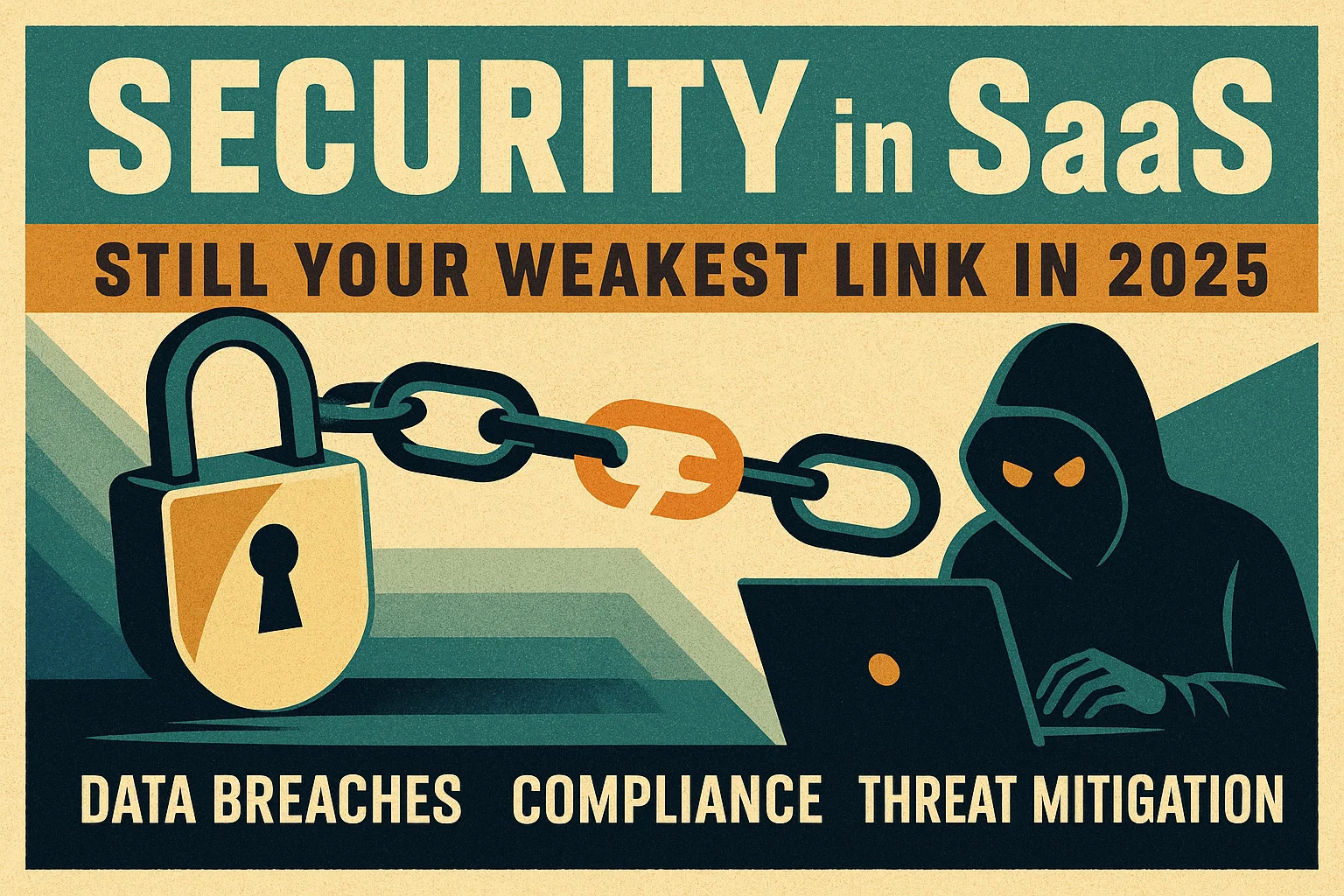SaaS Security in 2025: Still Your Weakest Link?

Is SaaS Security Still a Weak Link in 2025?
Short answer: yes. And the longer answer is—alarmingly so.
As SaaS products scale and integrations grow deeper, security often remains an afterthought. Developers race to ship features, product owners chase KPIs, and security is reduced to a checkbox for investor decks. But in 2025, this approach is not just risky—it’s borderline negligent.
This article explores why security continues to haunt SaaS platforms, what’s changed (and what hasn’t), and how to finally stop treating it like a side quest.
Why SaaS Security Is More Critical Than Ever
We live in a post-Zoom, post-LastPass, post-"Oops, we leaked our production database to GitHub" world. And if you think your startup is too small to be a target—think again. In 2025, automated botnets don't discriminate. A misconfigured Firebase instance? That’s all it takes to expose user PII.
Here’s what’s making things worse:
- Third-party integrations: The more tools you plug in, the more attack surfaces you expose.
- Microservice overload: Distributed systems = distributed vulnerabilities.
- Remote-first teams: Weak access policies and shadow IT are a dream for hackers.
- GDPR, CCPA, and now the U.S. Data Privacy Act: Non-compliance = lawsuits and brand suicide.
Top 5 SaaS Security Mistakes We Still See in 2025
1. Storing sensitive data you don’t need
Still storing plaintext emails "just in case"? Stop. The less you store, the less you leak.
2. Weak or no multi-factor authentication
It's 2025. If you’re not enforcing MFA by default, you’re inviting disaster.
3. Insecure CI/CD pipelines
Hardcoded secrets in your repo? Leaky tokens? If your dev pipeline is compromised, so is your entire app.
4. Ignoring role-based access control (RBAC)
Your intern shouldn't have the same permissions as your CTO. Period.
5. Not budgeting for security
Security isn’t an expense. It’s risk management. And it costs far less than a breach.
What Security-First Looks Like in 2025
Here’s what modern SaaS security practices look like:
- End-to-end encryption: Not just for user data—extend it to logs, backups, and internal services.
- Zero-trust architecture: Every service must authenticate. Even internal ones.
- Real-time threat monitoring: Integrate behavioral anomaly detection, not just signature-based systems.
- Security champions on dev teams: Not all security should come from outside consultants.
- Pen-testing as a habit, not a project.
Our Approach at Integritas
At Integritas, we build SaaS products with security as a foundation—not a patch. Our backend architecture for Laravel web development and Node.js development is designed with encryption, RBAC, and audit logs baked in.
We implement:
- Secure defaults
- DevSecOps workflows
- GDPR-ready infrastructure
- Continuous security testing
Because building secure SaaS is cheaper than explaining why your users' data leaked to Twitter.



